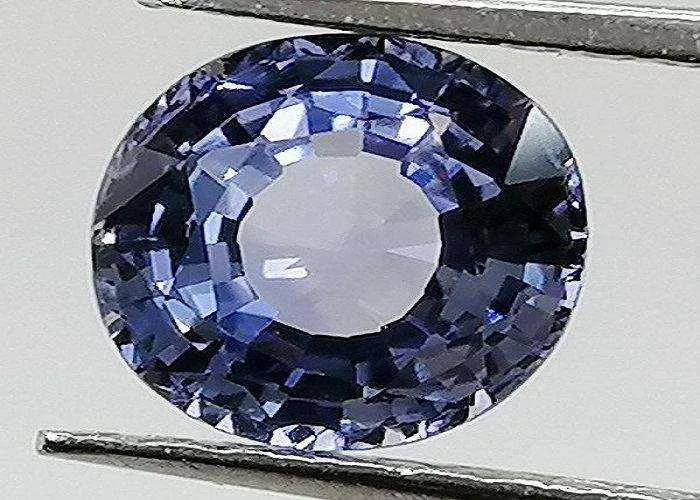Blue sapphires are among the most coveted gemstones in the world, prized for their stunning color, durability, and timeless elegance. Whether you’re a collector, a jewelry enthusiast, or someone looking for the perfect engagement ring, choosing the right blue sapphire can be overwhelming.
In this guide, we’ll explore the 10 best blue sapphires, covering their origins, color grades, clarity, and what makes each one special. We’ll also dive into essential gemstone knowledge to help you make an informed decision.
Kashmir Blue Sapphire: The King of Sapphires
Why It’s Special
Kashmir sapphires, mined in the Himalayas, are legendary for their velvety blue hue with a slight milky appearance, known as “sleepiness.” This unique effect comes from microscopic inclusions that scatter light, giving the gem a dreamy glow.
Key Features
- Color: Intense cornflower blue
- Clarity: Slight silk-like inclusions
- Rarity: Extremely rare (most stones were mined in the late 1800s)
- Price: The most expensive sapphires, often selling for over $100,000 per carat
Best For: Collectors and investors seeking the finest blue sapphire.
Burmese Blue Sapphire: Royal Blue Brilliance
Why It’s Special
Mined in Myanmar (Burma), these sapphires rival Kashmir stones in color but often have greater transparency and a deeper royal blue tone.
Key Features
- Color: Rich, vivid blue (sometimes with violet undertones)
- Clarity: Fewer inclusions than Kashmir sapphires
- Durability: Excellent hardness (9 on the Mohs scale)
- Price: High, but more accessible than Kashmir
Best For: Those who want a deep blue sapphire with exceptional brilliance.
Ceylon (Sri Lankan) Blue Sapphire: The Classic Choice
Why It’s Special
Sri Lanka (Ceylon) produces some of the most bright and lively blue sapphires, ranging from light sky blue to deep cornflower.
Key Features
- Color: Medium to light blue (often with high brilliance)
- Clarity: Generally eye-clean
- Availability: More common than Kashmir or Burmese sapphires
- Price: Wide range, from affordable to high-end
Best For: Jewelry lovers who prefer a vibrant, sparkling blue.
Madagascar Blue Sapphire: The New Favorite
Why It’s Special
Madagascar has become a major sapphire source, producing stones with similar quality to Ceylon sapphires but at more competitive prices.
Key Features
- Color: Varies from light to intense blue
- Clarity: Often clean with good transparency
- Ethics: Some mines follow fair-trade practices
- Price: More budget-friendly than Kashmir or Burmese
Best For: Buyers who want a high-quality sapphire without the premium price.
Australian Blue Sapphire: Dark and Mysterious
Why It’s Special
Australian sapphires are known for their inky blue-green tones, often appearing almost black in low light but revealing deep blue in sunlight.
Key Features
- Color: Dark blue with green secondary hues
- Clarity: Can be included, but some high-quality stones exist
- Durability: Excellent for everyday wear
- Price: More affordable than other blue sapphires
Best For: Unique, moody sapphire jewelry with character.
Thai Blue Sapphire: Heat-Treated Perfection
Why It’s Special
Thailand is a major hub for heat-treated sapphires, enhancing color and clarity. Many commercial-grade sapphires come from here.
Key Features
- Color: Even, deep blue (often enhanced by heat treatment)
- Clarity: Usually eye-clean
- Availability: Widely available in jewelry markets
- Price: Affordable for treated stones
Best For: Buyers looking for a budget-friendly, treated sapphire.
Montana Blue Sapphire: The American Gem
Why It’s Special
Mined in the USA, Montana sapphires have a unique steel-blue or teal hue, appealing to those who love unconventional colors.
Key Features
- Color: Range from light blue to greenish-blue
- Clarity: Often very clean
- Ethics: Ethically sourced, small-scale mining
- Price: Mid-range, depending on color
Best For: Eco-conscious buyers who want a domestic sapphire.
Tanzanian Blue Sapphire: Rare and Vivid
Why It’s Special
Tanzania produces some exceptionally vivid blue sapphires, though they are less common than other varieties.
Key Features
- Color: Bright, electric blue
- Clarity: Can have inclusions but often eye-clean
- Rarity: Not as widely available
- Price: Mid to high, depending on quality
Best For: Those seeking a bold, unique blue sapphire.
Cambodian Blue Sapphire: Underrated Beauty
Why It’s Special
Cambodian sapphires are lesser-known but can rival Ceylon stones in color and clarity.
Key Features
- Color: Medium to dark blue
- Clarity: Often clean with good brilliance
- Availability: Growing in popularity
- Price: More affordable than top-tier sapphires
Best For: Buyers looking for hidden gem-quality sapphires.
Nigerian Blue Sapphire: The Up-and-Comer
Why It’s Special
Nigeria is an emerging source of fine blue sapphires, offering stones with deep color and good clarity.
Key Features
- Color: Medium to dark blue
- Clarity: Often eye-clean
- Price: More budget-friendly
- Potential: Increasing recognition in the gem market
Best For: Buyers who want a high-quality sapphire at a lower price.
How to Choose the Best Blue Sapphire?
When selecting a blue sapphire, consider:
- Color: The most important factor—look for vivid, even tones.
- Clarity: Fewer inclusions mean better brilliance.
- Cut: A well-cut sapphire maximizes sparkle.
- Carat Weight: Larger stones are rarer and more expensive.
- Origin: Kashmir and Burmese sapphires command the highest prices.
- Treatment: Heat-treated stones are common; untreated ones are more valuable.
Conclusion
Blue sapphires come in many shades and origins, each with unique charm. Whether you prefer the dreamy blue of Kashmir, the vivid hues of Ceylon, or the affordable beauty of Madagascar sapphires, there’s a perfect blue sapphire for every taste and budget.
By understanding the differences between these top 10 blue sapphires, you can make an informed choice and find a gem that will last a lifetime.
Would you like recommendations for specific jewelry settings or care tips? Let us know in the comments!
Related Topics:
- Activate the Magic of Blue Sapphire: Tips and Secrets
- Where to Wear Your Blue Sapphire Ring: A Guide for Women
- How Much Does a Dark Blue Sapphire Cost?


